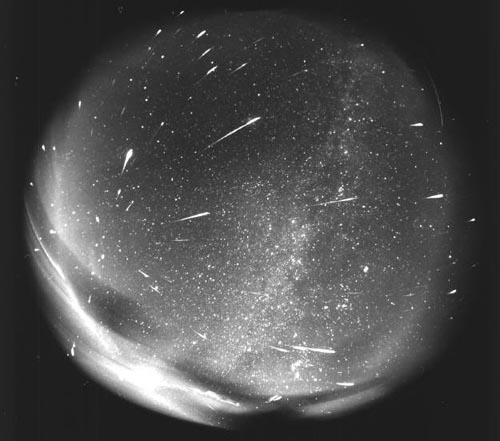
|
Credit & Copyright: Juraj Toth
(Comenius U. Bratislava),
Modra Observatory
Explanation:
Is Leo leaking? Leo, the famous sky constellation visible on the left of the
above all-sky photograph,
appears to be the source of all the
meteors seen in this year's
Leonids Meteor Shower.
That
Leonids point back to
Leo is not a surprise - it is the reason this November
meteor shower
is called the Leonids.
Sand-sized debris expelled from
Comet Tempel-Tuttle
follows a well-defined orbit about our Sun,
and the part of the orbit that approaches
Earth
is superposed in front of the constellation Leo.
Therefore, when Earth crosses this orbit, the
radiant point of falling debris appears in Leo.
Over 150
meteors
can be seen in the
above four-hour exposure.
The
Geminid Meteor Shower, which appears to eminate from
the constellation of
Gemini, peaks this coming weekend.
|
January February March April May June July August September October November December |
| ||||||||||||||||||||||||||||||||||||||||||||||||
NASA Web Site Statements, Warnings, and Disclaimers
NASA Official: Jay Norris. Specific rights apply.
A service of: LHEA at NASA / GSFC
& Michigan Tech. U.
Based on Astronomy Picture
Of the Day
Publications with keywords: Leonids - constellation - meteor
Publications with words: Leonids - constellation - meteor
See also:
- APOD: 2025 August 25 B The Meteor and the Star Cluster
- APOD: 2025 August 6 B Meteor before Galaxy
- APOD: 2024 November 27 B The Meteor and the Comet
- Meteor over the Bay of Naples
- Fireball over Iceland
- APOD: 2023 August 23 B The Meteor and the Galaxy
- APOD: 2023 July 16 B Meteor and Milky Way over the Alps
